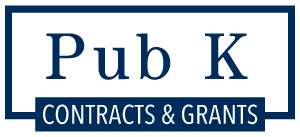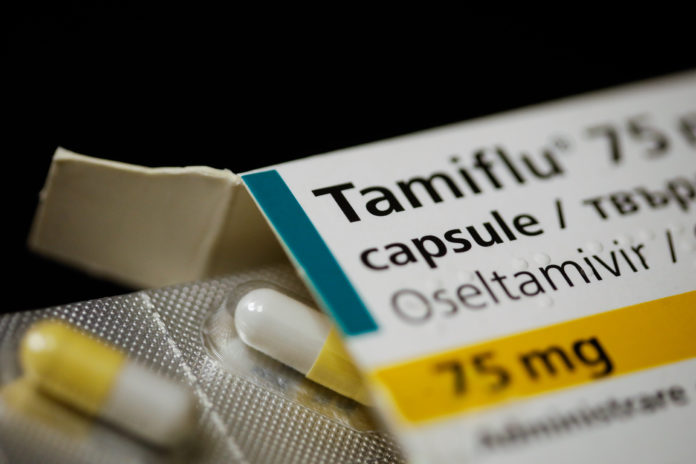The district court denied Roche’s motion to dismiss a qui tam complaint alleging the manufacturer falsely attested to the use and efficacy of an antiviral drug in order to induce the Department of Health and Human Services to purchase millions of doses for the national stockpile of influenza medications. The defendant argued the relator’s allegations amounted to mere disagreement with the methodology and interpretation of scientific tests that purportedly showed the drug reduced the spread and severity of influenza. However, the court noted that the relator did not merely disagree with the defendant’s tests, but alleged a scheme through which the defendant funded tests and articles that contradicted FDA findings, used a flawed methodology that skewed results, and knowingly shared incorrect data with HHS, Congress, and the Centers for Disease Control and Prevention to boost the profile of its product. The defendant also argued the alleged misrepresentation was not material, because the government acknowledged that tests had not conclusively demonstrated the efficacy of the drug, but the court noted the defendant itself relied on its scientific studies to repeatedly tout the benefits of its product, meaning the defendant believed these statements could influence the agency’s buying decision.
Defendant Hoffmann-La Roche Inc. moved to dismiss a qui tam action alleging it mischaracterized the efficacy of an oral antiviral prescription drug in order to fraudulently induce the government into purchasing supplies of the drug worth millions of dollars. The relator moved to strike multiple exhibits attached to the motion to dismiss, as well as related factual assertions and legal arguments.
The drug—Tamiflu—was created by Gilead Sciences Inc., which licensed the pharmaceutical to Roche for development and marketing. In 1999, Roche sought FDA approval to market the drug for influenza treatment. FDA approved the drug for the treatment of simple influenza, but concluded that Tamiflu did not reduce the severity of flu symptoms or prevent hospitalizations, secondary bacterial infections, or mortality.
In 2000, Roche submitted a supplemental request seeking an indication for flu prophylaxis and treatment indications for reduction of flu-related complications and hospitalizations. FDA concluded that Tamiflu only prevented people from developing symptomatic influenza and approved an indication for the prophylaxis of influenza in adults and adolescents thirteen years and older. In doing so, FDA also concluded that the clinical trial data did not support claims that Tamiflu prevented either asymptomatic influenza infection or viral transmission. The agency also rejected Roche’s attempt to position the drug for treatment of lower respiratory tract infections and pneumonia.
At this time, FDA also challenged Roche’s marketing statements regarding Tamiflu. Specifically, in April 2000, FDA sent Roche a cease-and-desist letter regarding claims that Tamiflu had “the power to stop the flu” and that it reduced the duration and severity of symptoms and secondary complications.
Nonetheless, Roche continued to promote Tamiflu’s efficacy for pandemic uses, in part through the publication of scientific articles claiming that the drug prevented flu transmission within households and implying that the drug prevented person-to-person transmission, even though the clinical data did not support that implication.
During the period, Roche lobbied the government to add Tamiflu to the National Stockpile of treatments available for distribution in the event of a pandemic. The Department of Health and Human Services’ Pandemic Preparedness and Response Plan repeated the assertions Roche made about Tamiflu in its scientific articles, again despite the lack of evidence from clinical trials supporting those assertions. According to the complaint, Roche continued providing HHS with misinformation about Tamiflu’s demonstrated and approved efficacy, which HHS repeated.
Eventually, HHS approved a plan to include some 36 million doses of Tamiflu in the National Stockpile, as part of its pandemic preparedness plan. The plan referenced Roche’s assertions that the drug could decrease the duration of illness, viral transmission, pneumonia, hospitalizations, and mortality. Congress later appropriated nearly $1 billion for antiviral treatments, which was used in part to purchase millions of courses of Tamiflu.
Relator Thomas Jefferson is a physician and medical researcher who specializes in public health and acute respiratory infections and who has researched neuraminidase inhibitors, which include Tamiflu. In 2009, Jefferson began to question Tamiflu’s efficacy and sought to independently corroborate Roche’s claims. Using Roche’s data, Jefferson confirmed that Tamiflu reduced the duration of flu symptoms, but also concluded that this benefit was offset by severe side effects, namely nausea and vomiting.
Jefferson also disproved Roche’s claim that Tamiflu reduced flu-related complications, hospitalizations, deaths, and person-to-person transmission. He also determined that Tamiflu had no significant effect on the rate of flu-related bronchitis, sinus infections, or ear infections. He also disputed Roche’s conclusion that Tamiflu reduced complications or severity by 50 percent, and discovered that the clinical trials that supported this finding were never presented to FDA or peer reviewed.
Jefferson attempt to replicate the results of certain studies but was unsuccessful. However, he did uncover several methodological flaws, including the study’s count of self-reported, unverified pneumonia in test subjects and failure to follow data handling rules. Jefferson also learned that Roche funded all of the clinical trials and compiled, processed, and analyzed the data that was used in those trials. Further, several of the authors of the articles were Roche employees and one had received significant payments from Roche for consulting work. Based on his research, Jefferson concluded there was no evidence of Roche’s claims and that Tamiflu’s labeling should be corrected.
Jefferson filed this action on behalf of the federal government and multiple states. Roche moved to dismiss and Jefferson filed his motions to strike.
The court first considered the relator’s motion to strike exhibits memorializing publicly available statements that the CDC and FDA made about Tamiflu. Specifically, these exhibits included FDA’s current informational page about Tamiflu’s approved indications; several articles and transcripts posted on CDC’s website; the most recent version of HHS’ Pandemic Influenza Plan; and other items. The court denied the motion to strike.
First, the court found the relator’s motion procedurally improper, because it was not aimed a pleading. To the extent Jefferson sought to challenge legal or factual assertions in the motion to dismiss, the court explained he could have done so in his opposition. Second, even if Jefferson could challenge Roche’s motion and the attached exhibits through Rule 12(f), the court found his motion was moot, as it did not rely on any of the challenged exhibits when evaluating the efficiency of his claims.
Next, the court considered the motion to dismiss. The relator asserted two categories of false statements and a fraudulent scheme. First, he alleged Roche misrepresented the efficacy of Tamiflu in preventing the spread and severity of influenza and the drug’s ability to limit multiple complications. Second, he argued Roche made legally false statements by impliedly certifying that Tamiflu provided the benefits the government sought when it purchased the drug for the national stockpile. Jefferson argued the government relied on those representations when it purchased the drug and was therefore fraudulently induced into purchasing Tamiflu.
In the fraud in the inducement claim, Jefferson generally asserted that when Roche failed to obtain FDA approval for the indications it sought for Tamiflu, it funded scientific journal articles that falsely reported that Tamiflu was effective in ways the FDA did not find. The relator identified three separate instances when Roche made these impliedly false certifications, generally surrounding the defendant’s efforts to have Tamiflu added to the national stockpile.
First, the court agreed that the relator’s allegations about the Roche-funded scientific articles were sufficient to survive a motion to dismiss. The relator outlined his claim that the articles’ authors were paid by Roche and that the articles identified benefits in Tamiflu that were inconsistent with FDA’s findings. He also noted various methodological flaws in some of the studies relied upon in the articles, and found the data did not support the articles’ conclusions.
The court noted that scientific opinions may be deemed false for the purposes of an FCA claim, because an opinion carries an implied assertion, not only that the speaker knows no facts which would preclude such an opinion, but that he does know facts which justify it. The court found the relator sufficiently alleged that Roche made these assertions fraudulently. The court also noted he did not merely disagree with the methodology of the studies or interpretation of the results, but asserted the existence of a scheme through which Roche intentionally generated studies and scientific articles contrary to FDA’s findings, for the purpose of increasing sales of Tamiflu to the government.
The court also found the relator established the misstatements were material. Roche argued that HHS’s Final Pandemic Plan acknowledged the limitations on the evidence regarding Tamiflu’s effectiveness in a pandemic environment, and therefore the relator could not show the government relied on any misstatements when making its acquisition of the drug. Because the government purchased the drug knowing that trials were not conclusive showed this element was not material, the defendant argued.
However, the court found these statements by HHS were not dispositive to materiality. The fact that HHS later issued disclaimers regarding the effectiveness of Tamiflu did not mean the agency did not rely on Roche’s assertions about the drug when making its buying decision, which amounted to 90 percent of the annual budget for the stockpile. As the relator argued, had Roche not believed the studies were material in the government’s pandemic planning determinations, it would not have relied on those studies and related articles in statements it made to HHS, CDC, government working groups, and Congress. Thus, Roche itself believed the statements had the ability to influence HHS’s decisions. That was enough to survive a motion to dismiss.
The relator also alleged Roche made legally false statements to obtain payment from HHS. According to the relator, Roche understood that pandemic efficacy was a material term of the contracts, and even affixed labeling on the packaging indicative that the Tamiflu was sold pursuant to government stockpiling contract. Considering the alleged facts as true, the court found this sufficient to assert the existence of a contract that would require Roche to certify its compliance, which it could not truthfully do.
Finally, because the court affirmed the federal claims, it also allowed the state claims to proceed.





